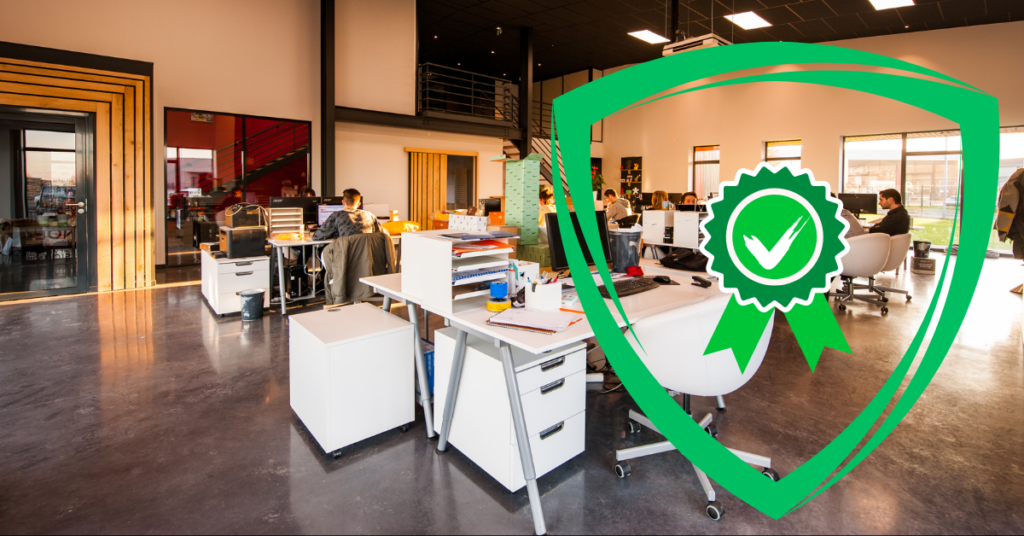<body>
<h1>Look-at-Test: Unveiling the Truth Behind Visual Inspection</h1>
<p>In various fields, from manufacturing and engineering to medicine and education, the "look-at-test" serves as a fundamental method for initial assessment. This seemingly simple process involves a visual examination of an object, system, or situation to identify potential issues, assess overall condition, or gather preliminary information. While it may appear straightforward, the effectiveness of a look-at-test hinges on several factors, including the observer's experience, the environment, and the specific criteria being assessed. This article delves into the nuances of the look-at-test, exploring its applications, limitations, and techniques to enhance its reliability.</p>
<h2>What is a Look-at-Test?</h2>
<p>At its core, a look-at-test is a visual inspection performed to gain an initial understanding of something. It's often the first step in a more comprehensive evaluation process. It involves observing and scrutinizing the subject to identify any obvious defects, anomalies, or areas of concern. The objective is to quickly assess the overall condition and determine if further investigation is warranted.</p>
<p>Think of a mechanic glancing at a car engine – that's a look-at-test. A doctor visually inspecting a patient's skin – that's a look-at-test too. It’s a practical, often rapid, method of gathering initial data.</p>
<h2>Applications Across Industries</h2>
<p>The look-at-test transcends specific industries, finding application wherever visual assessment provides valuable information:</p>
<ul>
<li><b>Manufacturing:</b> Quality control inspectors use look-at-tests to identify surface defects, incorrect assembly, or inconsistencies in materials. This can involve checking for scratches, dents, or improper alignment on manufactured products.</li>
<li><b>Construction:</b> Before starting a construction project, a site manager might perform a look-at-test of the land, existing structures, or materials to assess their condition and identify potential problems.</li>
<li><b>Medicine:</b> Doctors and nurses frequently use look-at-tests to observe patients' physical appearance, skin condition, and posture, which can provide clues about their health status. A visual inspection of a wound, for example, can reveal signs of infection.</li>
<li><b>Automotive Industry:</b> Mechanics utilize look-at-tests to quickly diagnose problems with vehicles. A visual inspection of tires, brakes, and engine components can often reveal obvious issues.</li>
<li><b>Aerospace:</b> Aircraft maintenance crews perform thorough look-at-tests on aircraft fuselages, wings, and engines to identify any signs of damage or wear that could compromise safety.</li>
<li><b>Food Industry:</b> Quality control personnel in food processing plants conduct look-at-tests to ensure that food products meet visual standards for color, shape, and texture.</li>
<li><b>Software Development (Code Review):</b> While not purely visual in the physical sense, reviewing code involves a "look-at-test" of the code's structure, logic, and potential errors.</li>
<li><b>Education:</b> Teachers use a form of look-at-test when observing student behavior in the classroom to assess engagement and identify potential learning difficulties.</li>
</ul>
<h2>Advantages of the Look-at-Test</h2>
<p>The widespread use of the look-at-test can be attributed to several advantages:</p>
<ul>
<li><b>Speed and Efficiency:</b> Look-at-tests are generally quick and easy to perform, allowing for rapid assessment of a large number of items or situations.</li>
<li><b>Cost-Effectiveness:</b> Unlike more sophisticated testing methods, look-at-tests typically require minimal equipment and training, making them a cost-effective option.</li>
<li><b>Non-Destructive:</b> In most cases, a look-at-test does not damage or alter the subject being examined, allowing for further testing if necessary.</li>
<li><b>Accessibility:</b> Look-at-tests can be performed in a variety of settings, without the need for specialized equipment or facilities.</li>
<li><b>Early Problem Detection:</b> Look-at-tests can help identify potential problems early on, preventing them from escalating into more serious issues.</li>
</ul>
<h2>Limitations of the Look-at-Test</h2>
<p>Despite its advantages, the look-at-test is not without limitations:</p>
<ul>
<li><b>Subjectivity:</b> The results of a look-at-test can be subjective, as they depend on the observer's experience, training, and personal biases.</li>
<li><b>Limited Scope:</b> Look-at-tests can only detect visible defects or anomalies. They cannot identify internal flaws or hidden problems.</li>
<li><b>Environmental Factors:</b> Lighting conditions, viewing angles, and other environmental factors can affect the accuracy of a look-at-test.</li>
<li><b>Potential for Oversight:</b> Even experienced observers can miss subtle defects or anomalies during a look-at-test.</li>
<li><b>Dependence on Training:</b> The effectiveness of a look-at-test is directly related to the training and experience of the person performing the inspection. Untrained individuals may not recognize subtle signs of a problem.</li>
</ul>
<h2>Techniques for Enhancing the Reliability of Look-at-Tests</h2>
<p>To mitigate the limitations of look-at-tests and improve their reliability, consider the following techniques:</p>
<ul>
<li><b>Standardized Procedures:</b> Establish clear and consistent procedures for conducting look-at-tests, including specific criteria for assessment and documentation.</li>
<li><b>Training and Certification:</b> Ensure that personnel performing look-at-tests are properly trained and certified in the relevant inspection techniques.</li>
<li><b>Checklists and Visual Aids:</b> Use checklists and visual aids to help observers focus on key areas of concern and ensure that all relevant aspects are considered.</li>
<li><b>Multiple Observers:</b> In critical applications, consider having multiple observers perform look-at-tests independently to reduce the risk of oversight.</li>
<li><b>Controlled Environment:</b> Conduct look-at-tests in a controlled environment with consistent lighting and viewing conditions.</li>
<li><b>Use of Magnification and Other Tools:</b> Employ magnifying glasses, borescopes, or other tools to enhance visual acuity and identify subtle defects.</li>
<li><b>Regular Calibration:</b> Regularly calibrate any measurement tools used during the look-at-test to ensure accuracy.</li>
<li><b>Documentation:</b> Thoroughly document the results of each look-at-test, including any defects or anomalies identified, and the actions taken to address them.</li>
<li><b>Feedback and Continuous Improvement:</b> Regularly review the results of look-at-tests and solicit feedback from observers to identify areas for improvement in the inspection process.</li>
<li><b>Integrate with Other Testing Methods:</b> Use look-at-tests as a preliminary screening tool, followed by more sophisticated testing methods (e.g., non-destructive testing, laboratory analysis) when necessary.</li>
</ul>
<h2>Examples of Specific Look-at-Test Procedures</h2>
<p>To further illustrate the application of look-at-tests, let's examine some specific examples:</p>
<h3>Example 1: Visual Inspection of Welds</h3>
<p><b>Purpose:</b> To identify surface defects in welds that could compromise their strength and integrity.</p>
<p><b>Procedure:</b></p>
<ol>
<li>Clean the weld surface to remove any slag, dirt, or grease.</li>
<li>Visually inspect the weld for cracks, porosity, undercut, overlap, and other surface defects.</li>
<li>Use a magnifying glass to examine the weld more closely.</li>
<li>Compare the weld to a reference standard or drawing to ensure it meets the required dimensions and profile.</li>
<li>Document any defects found, including their size, location, and severity.</li>
</ol>
<h3>Example 2: Medical Skin Examination</h3>
<p><b>Purpose:</b> To identify skin lesions, rashes, or other abnormalities that could indicate a medical condition.</p>
<p><b>Procedure:</b></p>
<ol>
<li>Examine the patient's skin in good lighting, paying attention to the color, texture, and appearance of any lesions.</li>
<li>Note the size, shape, and location of any lesions.</li>
<li>Palpate any lesions to assess their texture and consistency.</li>
<li>Look for any signs of inflammation, infection, or bleeding.</li>
<li>Ask the patient about any symptoms they may be experiencing, such as itching, pain, or changes in the appearance of their skin.</li>
<li>Compare the lesions to reference images or descriptions of common skin conditions.</li>
<li>Document the findings and recommend further testing or treatment as needed.</li>
</ol>
<h3>Example 3: Pre-Flight Inspection of an Aircraft</h3>
<p><b>Purpose:</b> To ensure that the aircraft is in safe operating condition before flight.</p>
<p><b>Procedure:</b></p>
<ol>
<li>Inspect the aircraft's exterior for any signs of damage, such as dents, cracks, or corrosion.</li>
<li>Check the tires for proper inflation and wear.</li>
<li>Inspect the control surfaces (ailerons, elevators, rudder) for proper movement and damage.</li>
<li>Verify that all lights are functioning correctly.</li>
<li>Check the engine for any leaks or unusual noises.</li>
<li>Inspect the propeller or rotor blades for damage.</li>
<li>Review the aircraft's maintenance records to ensure that all required inspections and maintenance have been performed.</li>
<li>Follow the aircraft manufacturer's checklist for pre-flight inspection.</li>
</ol>
<h2>The Future of Look-at-Tests: AI and Automation</h2>
<p>The future of look-at-tests is likely to involve increased automation and the integration of artificial intelligence (AI). Computer vision systems are already being used in some industries to automate visual inspections, improving speed, accuracy, and consistency. These systems can be trained to identify even subtle defects that might be missed by human observers.</p>
<p>AI-powered image analysis can also be used to analyze images from look-at-tests, providing objective and quantitative data. This can help to reduce subjectivity and improve the reliability of the inspection process.</p>
<p>However, it's important to remember that AI and automation are not a replacement for human expertise. Human observers will still be needed to interpret the results of automated inspections and to make decisions based on their experience and judgment.</p>
<h2>Conclusion</h2>
<p>The look-at-test, despite its simplicity, is a powerful and versatile tool for initial assessment in a wide range of applications. By understanding its advantages and limitations, and by implementing techniques to enhance its reliability, organizations can effectively utilize look-at-tests to improve quality control, safety, and efficiency. As technology advances, the look-at-test is likely to evolve, incorporating AI and automation to further enhance its capabilities and effectiveness. However, the fundamental principle of visual inspection remains a crucial element in countless processes, from manufacturing and engineering to medicine and beyond.</p>
</body>




